This was another sunny week – it still feels like a treat to see the sun.
On Saturday Scott Mehus from Buffalo City organized a Golden Eagle count in southwest Wisconsin, southeastern Minnesota and northeastern Iowa.
I think there were about 40 people participating. Golden Eagles are rare in the Midwest, but the Driftless area in southwestern Wisconsin is one place where they can be found during the winter. (Here’s a map of where Golden Eagles have been seen on Christmas Bird Counts). Scott wants to keep track of how many are being seen in this area – this is the second annual count that he’s organized.
Two of the guys had a route right down our road so they stopped by our place for coffee and a visit. They’d seen lots of good birds, but no Golden Eagles. As they were sipping coffee in our living room, a Golden Eagle flew down our valley!
I rode with them to Fountain City to meet some of the other birders involved in the count. We did a little more searching for Golden Eagles along the way – no Goldens but we did see a couple of Rough-legged Hawks, and some Bald Eagles. On the way back to drop me off, as we turned into our driveway, we saw two immature Golden Eagles circling above our bluff.
My route for the count is our property, so I spent the next few days walking around looking for more Golden Eagles. I saw two birds together one more time, and then single birds twice more. I’m not sure if they were always the same two, or were actually 4 individuals. All were immatures with bright white spots on their wings, and a wide white band on their tails.
On my Golden Eagle walks I checked out some of the places I haven’t seen much of since last fall. The snow is nearly gone, so it’s easy to walk, even on the steep paths through the woods.
Here are some of the Eastern Red Cedars on Sumac Prairie. The photo shows how much more of a problem the sumac is than the cedars.

These lichens were growing on a rock in Sumac Prairie – they’re called Elegant Sunburst Lichens (Xanthoria elegans).
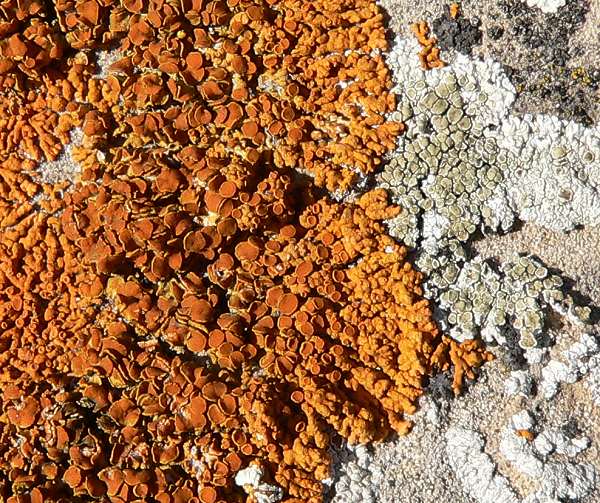
And here’s an odd, dark moss that grows on rocks in several of our prairies. It’s a Hair Tree Moss (Orthotrichum anomalum).
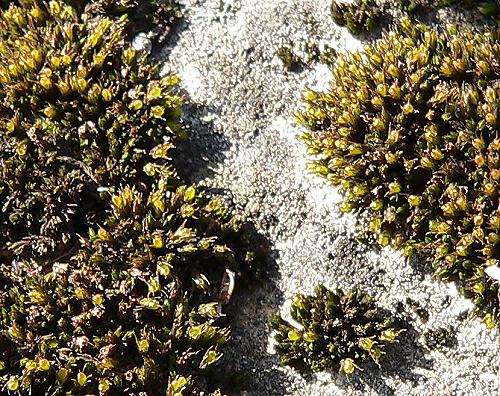
This is one of my favorite views – looking from the Knife Edge down through Center Valley.
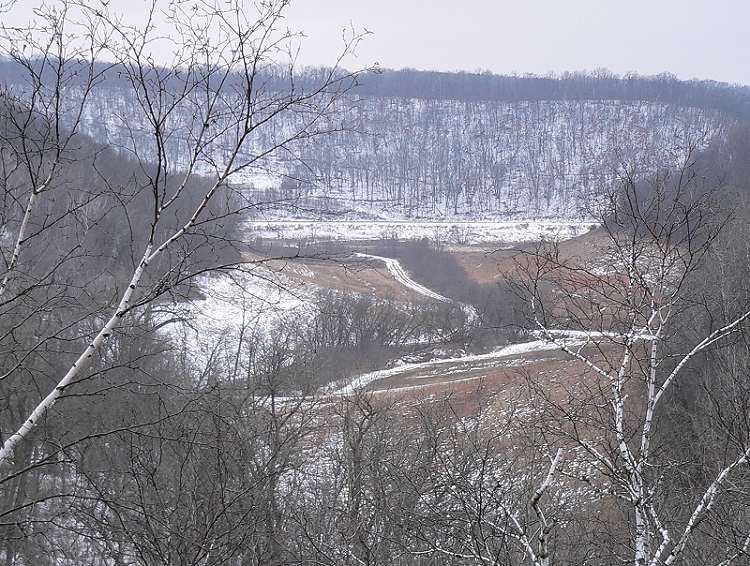
I found a huge shelf fungus on a dead birch tree – one of the largest I’ve ever seen. It’s about a foot wide and very thick.
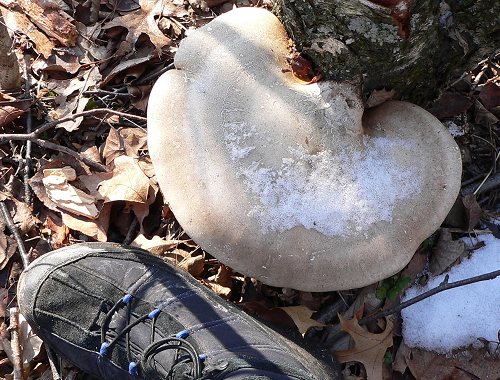
Underneath are the holes for the spores, and a forest of tiny jagged points hanging down between the holes.
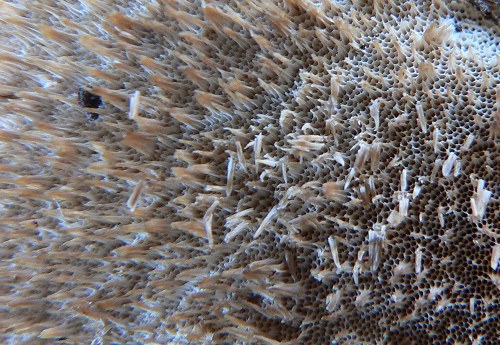
This kind of fungus is called Birch Polypore (Piptoporus betulinus). It grows only on dead birch trees and is an important part of the process of decomposition in a forest. It also has antibiotic properties and has been used medicinally by many cultures.
I did plant some seeds, but I’m still waiting for snow so I can finish off the very end of the field. This is the part I have left to do – with almost no snow on it.

Just before Christmas Jackie gave me large branch from one of her crabapple trees. I decided to put it on the deck for the birds – they like having branches to land on while they’re waiting for a place at the feeder. This week I discovered that Purple Finches like eating the crabapples off of the branch.
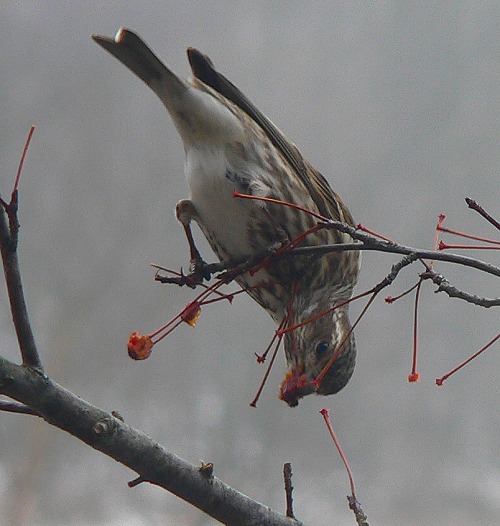
On these clear sunny days it gets very cold at night. In the morning the frost around holes in the cliff shows where the woodchucks are hibernating.

